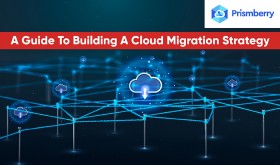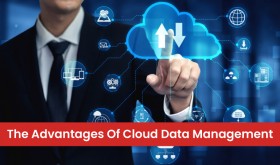
Cloud computing has emerged as the go-to technology for business. It allows companies to
move their data, applications, and other computing resources to the cloud so that users can
access them from anywhere with an internet connection.
However, like any other technology, cloud computing has pros and cons. In this blog, we’ll be
discussing the advantages and disadvantages of cloud computing.
Pros of Cloud Computing
Data backup and recovery
One of the most significant advantages of cloud computing is its ability to provide reliable and
efficient data backup and recovery solutions. By using cloud computing services, businesses
can store their data in secure off-site locations, reducing the risk of data loss due to disasters
such as fires, floods, or cyber-attacks. In addition, cloud-based backup solutions offer fast and
easy recovery of lost data, ensuring that businesses can resume operations quickly and without
any significant loss.
Low maintenance cost
Another significant advantage of cloud computing is its low maintenance cost. By using the
services of a cloud provider, businesses can eliminate the need for expensive hardware
purchases and maintenance, as well as reduce the need for in-house IT staff. Cloud
computing service providers will typically handle hardware maintenance, software updates,
and other maintenance tasks, reducing the burden on businesses and allowing them to focus on
their core business instead of worrying about maintaining their massive data
Data security
Cloud computing service providers also provide strong data security solutions that can help
businesses protect sensitive information from cyber-attacks and data breaches. A variety of
advanced security measures like encryption techniques, firewalls, multi-factor authentication,
regular security audits, and other security measures are used to protect data stored in the cloud.
In addition, cloud providers often employ dedicated security teams to monitor the infrastructure
and respond to any security threats quickly.
Reduced costs
By moving to the cloud, businesses can reduce their upfront costs and pay only for what they
use. This helps businesses eliminate costly investments in IT infrastructure and helps scale their
operations up or down quickly and efficiently without incurring any loss. It can also help reduce
IT staffing costs since all IT maintenance is outsourced to a cloud service provider.
Improved collaboration
Cloud computing services help improve collaboration among teams and different departments
within an organisation. With cloud-based collaboration tools, teams can work together on
projects and documents in real-time, regardless of their physical location. This ease of sharing
information securely in turn helps to improve productivity.
Easy scalability
Cloud computing services offer businesses the flexibility to scale their operations depending
on their needs and requirements. With cloud-based infrastructure, businesses can quickly add
or remove computing resources and storage easily without the need for a complete overhaul of
hardware. Similarly, businesses can also scale down just as quickly without incurring significant
losses.
Pay-per-use subscription model
Another advantage of using cloud computing services is that it offers a subscription-based
pricing model, which allows businesses to pay only for what they use. This can help businesses
save money since businesses only pay for the resources they use, rather than purchasing and
maintaining dedicated hardware.
Cons of Cloud Computing
Internet connectivity
One of the most significant cons or drawbacks of cloud computing is that it requires a stable and
reliable internet connection. This can be a challenge in areas with poor connectivity. If an
organisation has a slow or unreliable internet connection, its cloud-based applications and
services may not work correctly.
Limited control
Another con of cloud computing services is the limited control businesses have over their
data and applications. Businesses must completely rely on the cloud provider to manage and
maintain the infrastructure. This can be an issue for businesses that require complete control
over their data and applications.
Vendor lock-in
Vendor lock-in is a major disadvantage of cloud computing. Cloud computing services are
often proprietary and can be difficult to migrate away from if a business decides to switch
providers. This can make it challenging to move to a new provider and leads to a vendor lock-in
situation, which can be costly to break out from.
Conclusion
Cloud computing offers businesses a range of benefits. By making use of these advantages,
businesses can reduce their IT costs, improve their operations, and gain a competitive
advantage. However, despite cloud computing offering many benefits, it also has its cons. So,
before deciding to move your business to the cloud, it’s important to consider both the pros and
the potential downsides and only then make an informed decision.
FAQS
What is cloud computing and how does it work?
The 4 types of cloud computing are:
- Public cloud- A type of cloud computing accessible over the public internet. It is either
free or subscription-based. The main benefit is that it is a service hosted by a third-party
provider. This means that it is cost-effective and can scale up or down according to the
user’s needs. - Private cloud- A type of cloud computing service accessible only to one customer or
organization. This makes it easier for companies to manage and control their data, as
the cloud provider takes care of the maintenance and security of the cloud environment. - Hybrid cloud- A type of cloud computing service that is both public and private. With a
hybrid cloud computing service, businesses can store sensitive data in their private cloud
for better security, while using the public cloud for less sensitive data. - Multi-cloud- A type of cloud computing service that uses two or more clouds from two or
more different cloud providers. It enables businesses to access the services and
features different cloud providers offer and gives businesses the ability to control their
data and infrastructure as well as the flexibility to scale up or down depending on their
needs

















